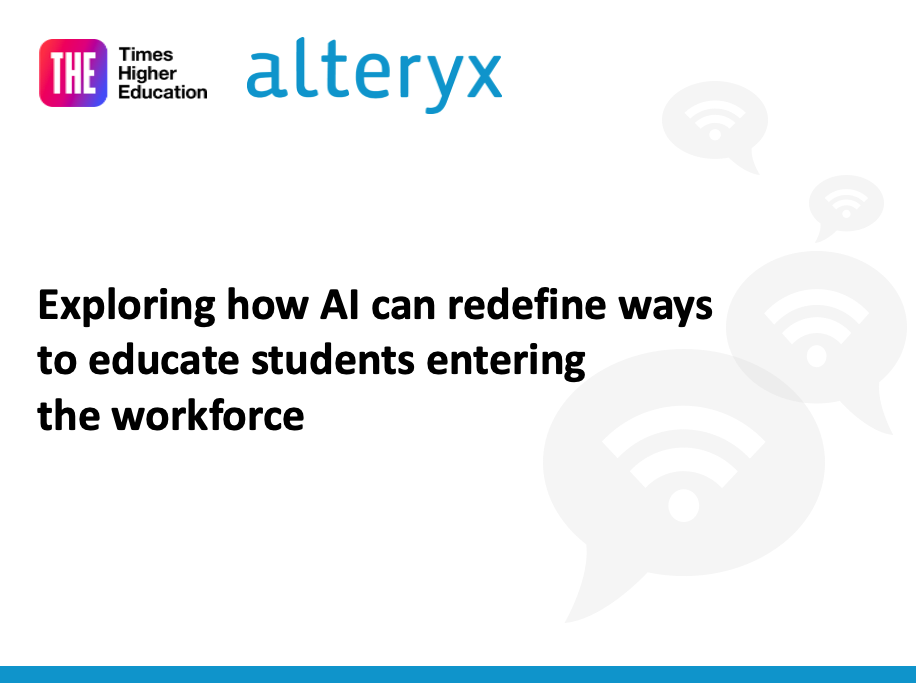As GenAI becomes increasingly embedded in higher education, its use in the classroom has sparked both innovation and concern. While some educators respond by banning these tools outright, others seek to guide students toward thoughtful and responsible AI use. As a professor of philosophy, I have adopted the latter approach. In my ethics and medical humanities courses, I encourage students to treat GenAI tools not as sources of truth but as tools for clarifying and refining their own ideas.
This pedagogical stance emphasises agency: students learn to critically assess what to include or exclude from AI-generated suggestions and to distinguish between factual repetition and genuine conceptual development. At the heart of this approach is a commitment to helping students articulate ideas that reflect their values, a central goal in philosophy education.
The approach I outline is scaffolded toward the culmination of a major written assignment: a 1,500 to 2,400-word midterm essay. I schedule the midterm date in advance and begin the scaffolded phases approximately six to seven weeks before its due date. Students begin by exploring the capabilities and limitations of GenAI tools through readings and group discussions.
They then engage in hands-on comparisons of generated responses to ethical and philosophical questions, using these exercises to examine bias and predictive limitations.
Finally, students apply GenAI tools to their own writing, progressing from reflective composition to AI interaction, and culminating in critical evaluation of AI-generated content.
This guide presents a four-phase framework for integrating GenAI tools into classroom assignments. Each phase includes learning objectives, curated readings, example prompts and activity formats. The activities are designed for first- and second-year non-major undergraduates who often bring a wide range of reading and writing skills to the classroom.
Phase one: build foundational understanding
Timeline: six to seven weeks before the assignment is due.
Objective: help students understand what GenAI tools are and how they work.
Readings:
- Talking about large language models by Murray Shanahan
- Watch an A.I. learn to write by reading nothing but Jane Austen by Aatish Bhatia
- Should I use ChatGPT to write my papers? by Timothy Aylsworth and Clinton Castro.
Suggested activity: group reading with discussion questions using colour-coded groups.
Example: Conduct a group reading of the Shanahan article using a colour-coded discussion format. Highlight the text in five colours, each corresponding to a student group. Assign each group a section and a guiding question:
Purple: What do GenAI tools do?
Blue: How do GenAI tools differ from human minds?
Green: What’s the problem with GenAI tools having no access to external reality?
Red: Can GenAI reason?
Yellow: Can GenAI generalise?
Before reading, each group selects a recorder and a presenter. Students read aloud and discuss their section for 20 minutes. Then, each group presents a two- to three-minute summary and response to their question in order of the reading.
- Spotlight guide: Bringing GenAI into the university classroom
- AI as tutor and critic - using tech to personalise education
- Three ways to use ChatGPT to enhance students’ critical thinking in the classroom
Phase two: in-class AI experiments
Timeline: five to six weeks before the final assignment is due.
Objective: explore how different GenAI tools respond to ethical questions.
Suggested tools: ChatGPT, Bing Chat, Claude.ai, Gemini, Snapchat AI.
Prepare ethical/philosophical prompts, such as “What is a moral theory?”; “Is it wrong to lie?”; “Should I go out with my friend or help care for my partner?”
Suggested activity: students work in small groups, and each is assigned a different GenAI tool. Using the same set of prompts, they input questions related to course content and record the responses. In an ethics course, for example, this activity can be used to explore concepts like moral relativism or utilitarian reasoning.
Each group compares their tool’s response with those from other groups and discusses:
- Were the responses different?
- What specific words or phrases varied?
- What does it mean that different AIs give different answers?
- What might this suggest about the reliability or objectivity of GenAI tools?
Use interactive software like Padlet or Mentimeter for students to anonymously submit their tool’s answers. Display responses live and facilitate a discussion on accuracy, tone and philosophical coherence.
Phase three: bias and predictive text activity
Timeline: four to five weeks before the midterm essay.
Objective: help students recognise and critically assess bias in AI-generated content.
This activity builds on the previous phase by deepening students’ understanding of how GenAI tools generate content and how predictive text can reflect and reinforce existing social biases.
Suggested tools: ChatGPT, Bing Chat, Claude.ai, Gemini, Snapchat AI.
Suggested activity: students work individually or in small groups to explore how GenAI tools may produce biased or stereotypical responses. They are encouraged to experiment with prompts that touch on sensitive or socially charged topics, observing how the model responds and where bias may appear.
Discussion questions:
- Can you make the AI say something biased?
- What kind of bias appears (eg, cultural, gender, racial, political)?
- What harm could this cause in real-world applications?
- How might such bias be mitigated by users, developers or educators?
Phase four: creative writing and AI reflection
Timeline: three to four weeks before final assignment.
Objective: encourage students to reflect on their ideas, engage with GenAI in a meaningful way and critically evaluate AI-generated content.
Students begin by writing a short reflective piece related to the midterm topic. For example, for my course on moral sexuality, a prompt might be: “How do you think people should date in a moral way? What are some things you should or shouldn’t do when dating?”
Three weeks before the final assignment, students submit their initial reflection for credit or no credit. A week later, after submitting their initial reflection, students input their writing into an GenAI tool of their choice (for example, ChatGPT, Claude.ai or Gemini). They then submit the original writing, the AI output, and a 300- to 500-word reflection on what changes they’ll keep or discard.
Final assignment option: students may use AI with prompt documentation in footnotes or an appendix. Make sure to provide direct instruction on citing AI use in higher education by, for example, following the official MLA style guide.
Rena Beatrice Alcalay is a research fellow at the Technical University of Munich.
If you would like advice and insight from academics and university staff delivered direct to your inbox each week, sign up for the Campus newsletter.




comment